#noolbenger
Photo
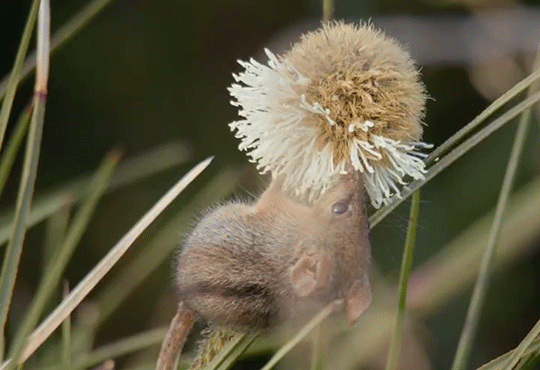


The honey possum, also called a noolbenger, is the only flightless animal that feeds exclusively on nectar and pollen. As such it’s an important pollinator in the grasslands of southern Australia.
Grassland Films
#honey possum#noolbenger#australia#grasslands#mammalia#diprotodontia#y'all should go to that wiki page there's uhh.. a really great illustration.
12K notes
·
View notes
Text

Noolbenger with banksia
By: M. K. Morcombe
From: The Fascinating Secrets of Oceans & Islands
1972
136 notes
·
View notes
Text
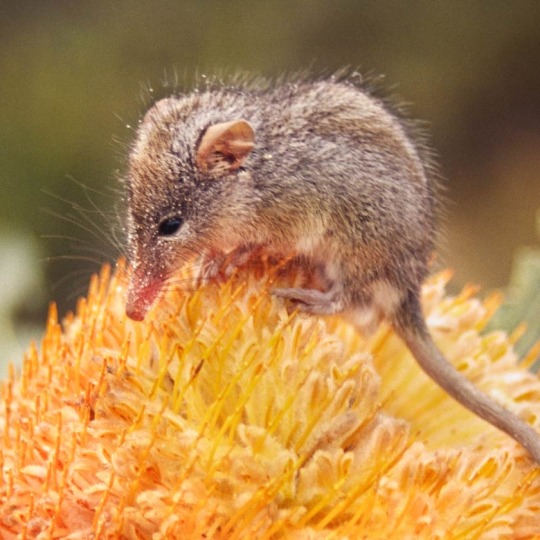

Shit dude.
#i literally don't understand why noolbengers look like this#Why are their eyes on the top of their head??
7 notes
·
View notes
Text
they will literally name animals anything in australia
1 note
·
View note
Text
What is a Noolbenger?
By John Wible
Noolbenger is the Aboriginal name for the honey possum. So, what is a honey possum? A honey possum, Tarsipes rostratus, is a mouse sized marsupial found in the coastal plains of southwestern Australia. It can only survive in environments where flowers bloom 12 months of the year, because it lives entirely on nectar! They are particularly fond of Banksiaor Australian honeysuckle and are important pollinators. Some bats are also exclusively nectivorous, but their mode of locomotion (i.e., flight) allows them to have large home ranges for feeding. The honey possum accomplishes this entirely on foot at night, scampering from plant to plant. Not surprisingly, it is an adept climber with a prehensile tail acting as a fifth limb. A protrusible tongue with a keratinized brush tip is the main nectar collecting organ. Bucking the usual trend in mammals where males are larger than females, the male honey possum is roughly two-thirds the size of the female.

From John Gould’s The Mammals of Australia (1863).
The Section of Mammals of Carnegie Museum of Natural History has eight specimens of this unusual mammal, which has a very un-mammal-like skull. The bones of the skull are paper thin, reminiscent of a hummingbird skull. It has a long and pointy snout, the better to sniff flowers with. The lower jaw is essentially a thin rod. The upper and lower teeth are reduced in number and size and resemble simple translucent pegs, because you don’t need big complex teeth to grind nectar for digestion. And there is essentially no place on the skull for chewing muscle attachment, again because chewing is not mandatory for feeding.

Tarsipes rostratus, CM 111901.
Honey possums are not considered to be endangered or even threatened. So far, the major concern to their continued existence is wildfires.
John Wible, PhD, is the curator of the Section of Mammals at Carnegie Museum of Natural History. John’s research is focused on the tree of life of mammals, understanding the evolutionary relationships between living and extinct taxa, and how the mammalian fauna on Earth got to be the way it is today. He uses his expertise on the anatomy of living mammals to reconstruct the lifeways of extinct mammals. John lives with his wife and two sons in a house full of cats and rabbits in Ross Township. Museum employees are encouraged to blog about their unique experiences and knowledge gained from working at the museum.
397 notes
·
View notes
Note
Ooh, how about Top 5 Favorite Animals?
1. Noolbenger (just because the name)

NOOOOOOOL
2. Echidna - because monotremes are cool. They're the first primitive step of reptiles evolving into mammals. Unlike most mammals, they lay eggs, have a cloaca, lactate but don't have nipples, have 5 pairs of sex chromosomes, are not entirely warm-blooded, and their zygotes develop similarly to birds and reptiles.

3. Tuatara - the ONLY extant species in the order Rhynchocephalia. That's right, the ORDER. As in:
Snakes & lizards - Squamata
Turtles - Testudines
Crocodiles - Crocodilia
Tuatara - Rhynchocephalia
This guy might look superficially like a lizard, but he is NOT. One of its many notable features (apart from being somewhere evolutionarily between, like, a dinosaur and a fish) is well-developed parietal eye -- a third eye on top of its head with a lens, retina, and cornea and rod-like structures.

4. Opossums. Because they eat ticks, don't get rabies, are giant goofy bluffers who hiss all scary-like when threatened and then pretend to die. Plus they are also heckin' primative! Just look in their mouth and see all those teeth! SO MANY TEETH. Most mammals lose teeth as they specialize and differentiate but NOT OPOSSUMS they get the full ancestral set!

Local mom regrets choice to have children
5. Brown Creeper - I just like them. They've got a high-pitched call that sounds like they're mocking you, nest under peeling bark (on a decaying tree or shagbark hickory), and are hard to spot but I've had good luck finding them. Plus I, too, am a creeper.

9 notes
·
View notes
Text
Honey Possum
Scientific Name: Tarsipes rostratus
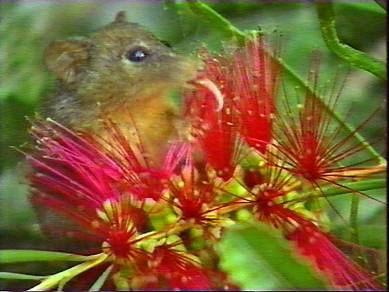
On the southernmost corner of Australia, a mouse sizes marsupial can be found known as the Tarsipes rostratus, or Honey Possum. The little brown and gray marsupial has lived alongside the indigeneous people for thousands of years and has developed many names, including honey possum and mouse.
It feeds itself by drinking the nectar from flowers with its specialized elongated snout. Despite its name, the honey possum is only vaguely related to possums and more closely related to possum like marsupials from Chile and South America.
Fun Fact #1: Ancestors of the early honey possum can be found as far away as Antartica.

DNA studies suggest that the Honey Possum evolved from a small possum-like marsupial from Chile in South America, and can even further be linked to microbiotheriid fossils discovered in South America, Antarctica and South Australia. Experts say that the honey possum's ancestors were stuck on the Austrailian continent after it drifted away from the large southern land mass named Gondwana, and since then has developed into the modern honey possum, or the noolbenger, as it is called by the land's indigenous people.
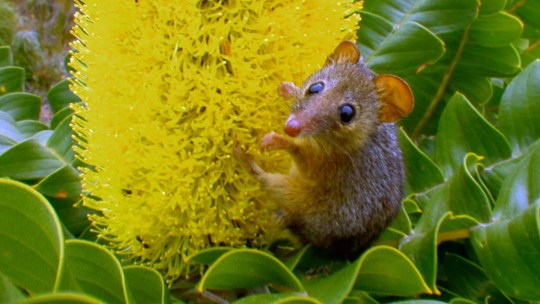
The honey possum may be found on coastal sand plains and heaths, where its diet consists mostly of the nectar from flowers. In a day, this mouse sized marsupial may drink twice of its body weight in nectar. This makes it a key component in south west Australia's ecosystem, which relies heavily on the little honey possum to carry pollen on its face from flower to flower.
Fun Fact #2: Although it is hardly a possum, Tarsipes rostratus has evolved to curl its tail around branches and hang vertically upside down.
The reproductive systems of Honey Possums are very unusual. Male honey possums, who are signifigantly smaller than their female counterparts, have large testes making up 4.2% of their body weight. Meanwhile, the female's eggs, which are otherwise standard for a mammal, may be fertilized by multiple males.
Here is the Taxonomy of Tarsipes rostratus:
Kingdom: Animalia
Phylum: Chordata
Class: Mammalia
Order: Diprotodontia
Family: Tarsipedidae
Genus: Tarsipes
Species: rostratus
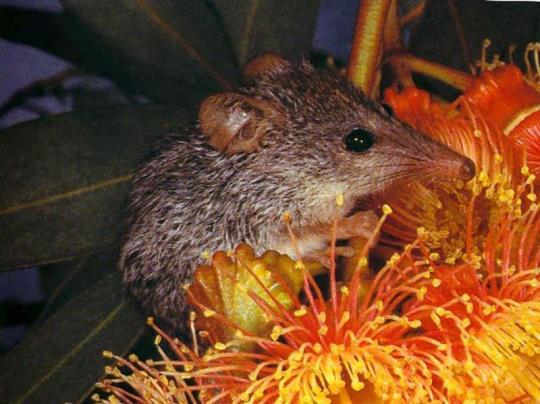
3 notes
·
View notes
Photo



Honey-possum (Tarsipes rostratus)
Also known as: Tait, noolbenger
The honey-possum is one of the very few entirely nectarivorous mammals; it has a long, pointed snout and a long, protrusible tongue with a brush tip that gathers pollen and nectar, like a hummingbird. Floral diversity is particularly important for the honey possum, as it cannot survive without a year-round supply of nectar and, unlike nectarivorous birds, it cannot easily travel long distances in search of fresh supplies. Although restricted to a fairly small range in the southwest of Western Australia, it is locally common and does not seem to be threatened with extinction so long as its habitat remains intact and diverse.
Classification
Animalia - Chordata - Mammalia - Metatheria - Marsupialia - Australidelphia - Diprotodontia - Phalangeriformes - Petauroidea - Tarsipedidae - Tarsipes - T. rostratues
Images: [x] [x] [x]
Source: [x]
#least concern#honey possum#tait#noolbenger#tarsipes rostratus#tarsipes#tarsipedidae#petauroidea#phalangeriformes#diprodontia#australidelphia#marsupialia#metatheria#species feature#mammalia#tetrapoda#vertebrata#chordata
24 notes
·
View notes
Text

Noolbenger
By: Eric Lindgren
From: Simon & Schuster's Guide to Mammals
1982
26 notes
·
View notes
